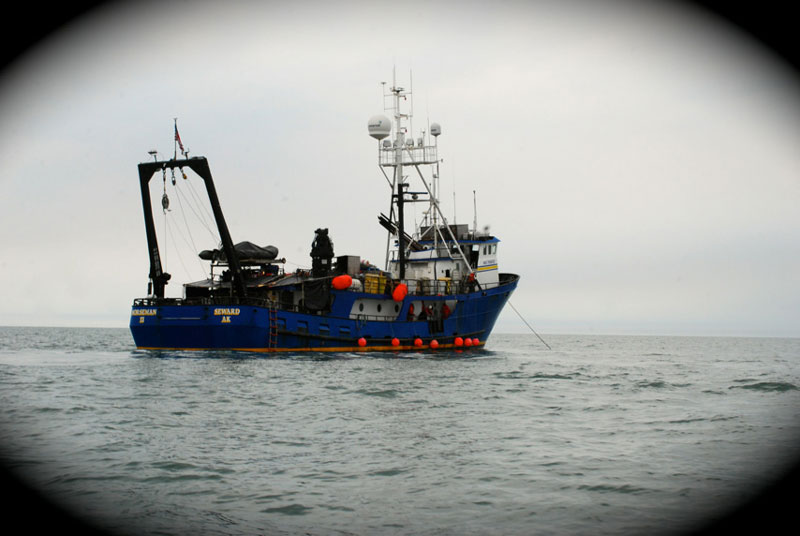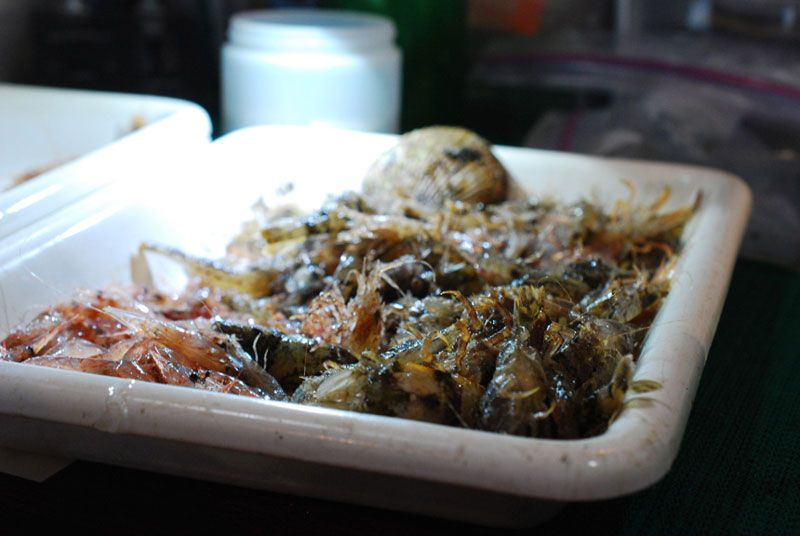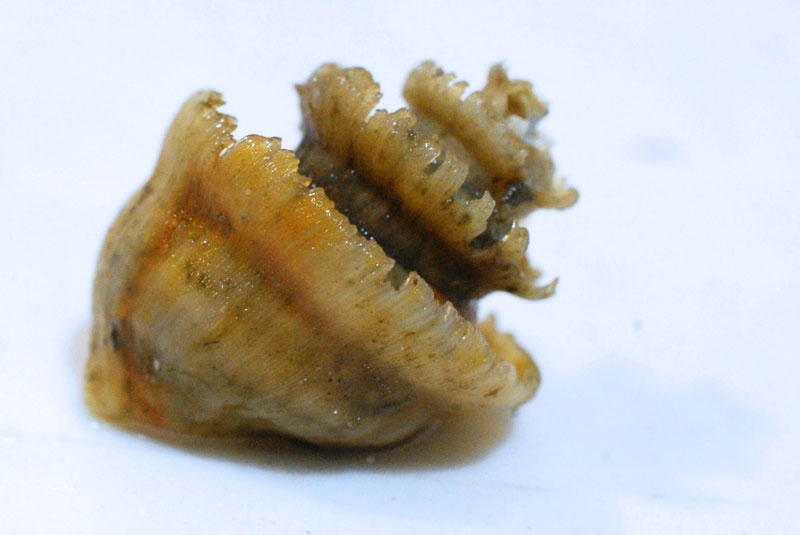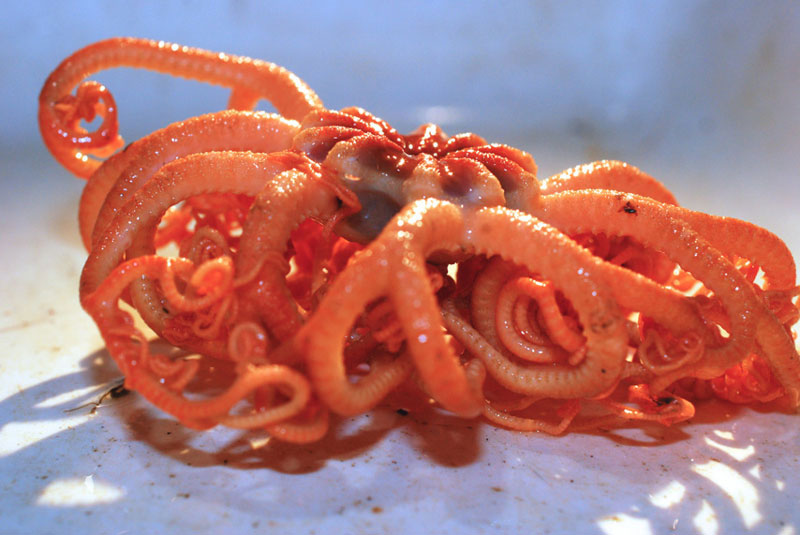
By Eric Collins, Co-Expedition Principal Investigator, University of Alaska Fairbanks

The Norseman II anchored in Prudhoe Bay, Alaska. Image courtesy of the Mapping the Uncharted Diversity of Arctic Marine Microbes expedition. Download larger version (jpg, 119 KB).
CTD. Bongo. Van Veen. HAPs. Bongo. PSBTA. IKMT.
After three days, this list is now a ritual. Though seemingly gibberish at first, each of these items is the name of an oceanographic “instrument” that scientists “play” in the “orchestra” that is an oceanographic expedition. Weaving amongst each other in a highly organized chaos for 12 straight hours, these instruments are music to the ears of the dozen oceanographers currently aboard the Norseman II.
The project that brings us together is the Arctic Marine Biodiversity Observing Network, or AMBON. Unlike the bikini-clad beachgoers who share the hashtag #ambon15 with us, we work the night shift dressed to the nines in steel-toed boots and bright orange survival suits. The goal is to characterize the biological diversity of the Chukchi Sea ecosystem from microbes to whales, and to integrate our observations into a larger biodiversity observing network spanning from Alaska to California to Florida.

A tray of invertebrates, fresh from a benthic trawl. Image courtesy of the Mapping the Uncharted Diversity of Arctic Marine Microbes expedition. Download larger version (jpg, 140 KB).
My role in the project is the “microbes” part. We’re investigating the diversity of bacteria, archaea, viruses, and “protists” (microscopic eukaryotes) by next generation DNA sequencing. In connection with the NOAA Office of Ocean Exploration and Research Marine Microbes project, I’m also collecting samples of sediment and the shells and guts of many of the invertebrate animals that are found during benthic trawls. We are interested in these “host-associated” microbial communities because of the old adage “you are what you eat.” Besides performing necessary functions as recyclers of dead organic matter, microbes also produce vitamins and other nutritious foods that algae and animals want or need, like vitamin B12 (cobalamin) or polyunsaturated fatty acids (PUFAs), including the omega-3 fatty acids that health-conscious readers are surely familiar with.

Neoiphinoe coronata, a snail (Mollusca: Gastropoda). Image courtesy of the Mapping the Uncharted Diversity of Arctic Marine Microbes expedition. Download larger version (jpg, 111 KB).

Gorgonocephalus sp., a basket star (Echinodermata: Ophiuroidea). Image courtesy of the Mapping the Uncharted Diversity of Arctic Marine Microbes expedition. Download larger version (jpg, 170 KB).
As bacteria are eaten by protists, and protists by zooplankton, and zooplankton by larger animals, these chemical compounds enter the food chain and become concentrated in the higher animals in a process called bioaccumulation. When these compounds are healthful, this is considered a good thing. However, bioaccumulation can also occur with harmful chemicals like pesticides and heavy metals. Using our CTDs, Bongos, Van Veens, HAPs’, PSBTAs, and IKMTs, we’re still learning about what role the microbes play in the transformation of these good and not-so-good chemicals.
CTD stands for Conductivity, Temperature, and Density meter, which measures salinity, temperature, and other parameters with depth in the ocean. Bongos are large nets that are towed through the water to collect plankton. A Van Veen is a device that scoops up sediment from the bottom of the sea and brings it back to the surface. HAPs is an instrument that is driven into the sediment to collect a two-foot-deep core. PSBTA is a ‘plumb staff beam trawl’ that is dragged along the surface of the sediment to collect fish and animals. IKMT is a net that is pulled through the water to catch fish.